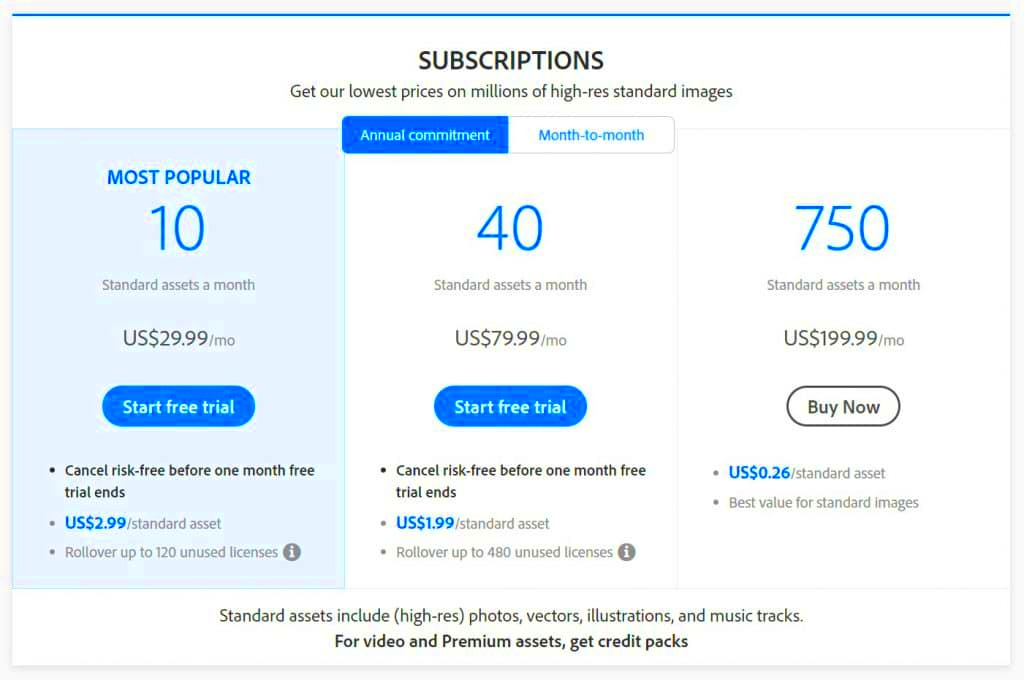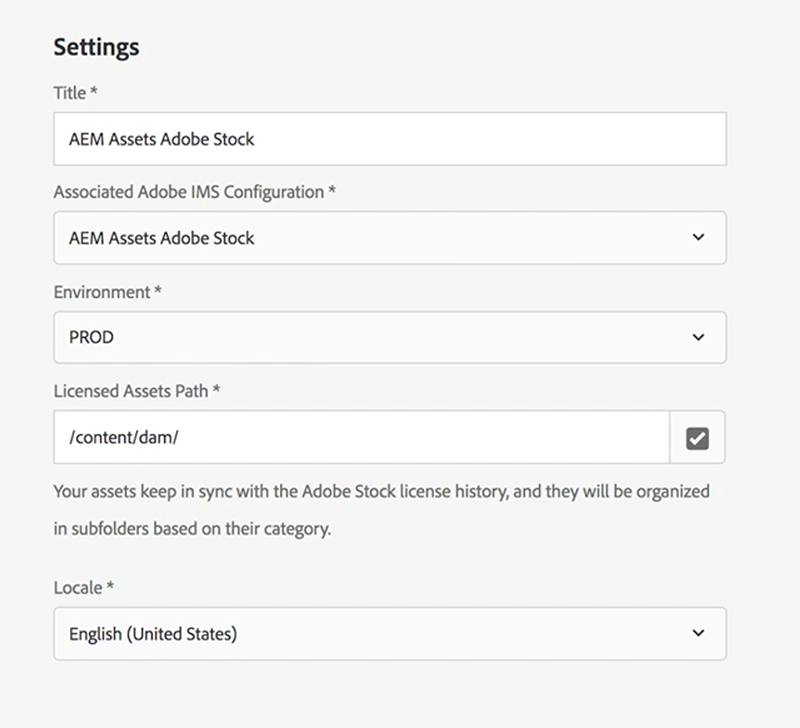Have you found yourself in a situation where you required an image or an attention grabbing video for your work but were unsure of where to find one? Well
Adobe Stock is here to save the day with its vast collection of resources. Standard assets are particularly favored by users due to their blend of affordability and quality. Whether you're a newcomer to
Adobe Stock or simply interested in learning more about what standard assets entail you've come to the spot. Let's take a closer look at how these assets can enhance your creative endeavors.
Understanding the Basics of Standard Assets

Standard assets available on
Adobe Stock are favored by creators due to their simplicity and affordability when it comes to obtaining visuals. These assets consist of images, videos and graphics all covered by a standard license. Here's what you should be aware of.
- License Type: Standard assets come with a royalty-free license, meaning you can use them in a variety of projects without additional fees.
- Usage Limits: You can use these assets in both digital and print media, but there are restrictions on how many copies you can distribute.
- Cost: Typically, standard assets are more affordable compared to extended licenses or custom content, making them a great option for budget-conscious creators.
Consider stock assets as the dependable and sturdy members of Adobe Stocks library. They are crafted to cater to various requirements while keeping costs in check.
Types of Standard Assets Available
Adobe Stock provides a wide range of standard assets to meet different creative requirements. Here’s an overview of the key categories available.
- Stock Images: These are high-resolution photos that cover everything from landscapes and people to objects and abstract concepts. Whether you need a serene nature shot or a bustling cityscape, stock images have got you covered.
- Stock Videos: Perfect for adding dynamic content to your projects, stock videos include everything from short clips to full-length scenes. They can be used in everything from social media ads to corporate presentations.
- Vectors and Illustrations: If you’re looking for custom graphics, vectors and illustrations are the way to go. They are scalable without losing quality, making them ideal for logos, infographics, and more.
- Templates: For those who need a quick start, Adobe Stock offers templates for various design needs, including flyers, social media posts, and more. These templates are customizable, allowing you to tweak them to fit your brand’s style.
To sum it up Adobe Stocks standard assets offer a complete set of tools for all your creative endeavors making it easier to bring your ideas to fruition.
Key Features of Standard Assets
Adobe Stocks standard assets offer a range of features that attract creatives globally. Having incorporated these assets into different projects I can attest to their effectiveness and convenience. Lets delve into what sets them apart.
- Royalty-Free License: One of the biggest advantages is the royalty-free license, which means you pay once and use the asset as many times as you need. This can be a game-changer for managing project budgets.
- High Quality: Adobe Stock is known for its high-quality assets. Whether it’s a crisp image or a smooth video, the quality of standard assets is consistently impressive, ensuring that your projects look professional.
- Versatility: These assets are versatile enough for a wide range of uses. From marketing materials to personal blogs, you can adapt standard assets to fit many different purposes.
- Easy Licensing: The licensing terms are straightforward, making it simple to understand how and where you can use the assets. There’s no need for complex legal jargon or additional agreements.
- Extensive Collection: Adobe Stock offers a vast library of standard assets. No matter what you’re looking for—be it a specific theme or a unique style—you’re likely to find it in their collection.
Based on what ive seen these aspects come together to provide a dependable and smooth resource for various creative requirements. It feels like having a neatly arranged toolbox that is always prepared to assist you in crafting something remarkable.
How to Use Standard Assets in Your Projects
Incorporating assets into your projects becomes effortless once you become familiar with the process. Here’s a walkthrough drawing from my personal experiences along with some helpful suggestions you might find useful.
- Search and Select: Start by searching for the asset you need on Adobe Stock. Use keywords that closely match your project’s theme. For example, if you’re designing a travel brochure, try searching for terms like “travel,” “destination,” or “landscape.”
- Preview the Asset: Before making a purchase, preview the asset to ensure it fits your needs. Adobe Stock allows you to view assets in detail so you can make an informed decision.
- Download and Integrate: Once you’ve selected your asset, download it and integrate it into your project. Whether it’s for a website, a presentation, or a social media post, make sure it complements your overall design.
- Respect Licensing Terms: Be mindful of the usage rights associated with the asset. Although standard assets have flexible terms, it’s important to adhere to the guidelines to avoid any legal issues.
- Customize as Needed: Don’t be afraid to tweak the asset to better fit your project. For instance, you can adjust colors, add text, or crop images to make them more suitable for your design.
Through my personal creative endeavors I’ve discovered that following these steps can make the workflow smoother and maximize the benefits of Adobe Stocks resources. It feels like having a reliable collaborator by your side to help turn your ideas into reality.
Benefits of Choosing Standard Assets
Opting for assets from
Adobe Stock comes with a range of advantages that make them a great option for various projects. After using these assets extensively, I’ve discovered some key benefits.
- Cost-Effective: Standard assets are generally more affordable compared to other types of licenses. This makes them ideal for individuals and small businesses working with limited budgets.
- Wide Selection: The sheer variety available means you can find assets that perfectly match your needs without spending too much time searching. This variety can also spark new ideas and creative directions.
- Instant Access: With standard assets, you get immediate access to high-quality content. This can be a lifesaver when you’re on a tight deadline and need to quickly source elements for your project.
- Streamlined Workflow: The ease of use and clear licensing terms simplify the process of incorporating assets into your work. This efficiency can significantly speed up your project’s progress.
- Professional Quality: The quality of standard assets ensures that your final product looks polished and professional. This is crucial whether you’re creating content for personal use or for clients.
From what I've seen these advantages make stock assets a preferred choice for numerous creatives. They strike a balance between cost effectiveness, high quality and ease of use that can really elevate your work.
Comparing Standard Assets with Other Asset Types
When selecting resources for your artistic endeavors, it’s crucial to grasp the variations between standard assets and other categories such as extended or premium ones. Based on my personal insights, being aware of these distinctions can significantly impact both expenses and application. Allow me to explain further.
- Standard Assets: These are the most common and budget-friendly option. They come with a royalty-free license that allows for wide usage without extra fees. However, there are some limitations on the number of copies and certain high-visibility uses.
- Extended Assets: If you need more flexibility, extended assets might be the way to go. They allow for broader usage, including merchandise and high-circulation items. The cost is higher, but they offer more extensive rights compared to standard assets.
- Premium Assets: Premium assets are typically unique and of higher quality. They come with a more extensive set of rights and are often used for high-profile projects. The price reflects their exclusivity and the additional rights provided.
In my work I’ve discovered that using assets strikes a good balance between affordability and quality. They work well for purposes while more advanced and premium assets are better suited for specific needs. Knowing these choices allows for decisions that align with your projects requirements and budget.
Common Questions About Standard Assets
After using the standard assets from
Adobe Stock for different projects I’ve noticed that there are some questions that people tend to ask frequently. Here’s a compilation of those inquiries along with my thoughts drawn from my own experiences.
What is a standard license?
- A standard license allows you to use the asset in a variety of ways, including digital and print media, but it has some limitations. For example, it typically restricts how many copies can be distributed and where the asset can be used.
Can I use standard assets for commercial purposes?
- Yes, you can. Standard assets are often used in marketing materials, websites, and other commercial applications. Just be sure to check the specific licensing terms to ensure you comply with any restrictions.
What happens if I need more usage rights?
- If you find that you need more extensive usage rights, you might consider upgrading to an extended license. This provides additional flexibility for high-circulation or commercial products.
How do I know if an asset is right for my project?
- Preview the asset before purchasing. Check if it matches your project’s theme and quality requirements. Also, review the licensing terms to make sure they fit your needs.
In my opinion these questions come up often and tackling them can make it easier to choose and utilize standard assets. Being knowledgeable is always a good idea when it comes to making the right decision for your creative projects.
Conclusion
Adobe Stocks standard assets present a convenient and budget friendly option for various creative endeavors. Whether you’re working on a website, designing promotional content or seeking top notch visuals these assets serve as a dependable source without straining your budget. Personally I have come to appreciate standard assets for their excellence, cost effectiveness and user friendliness.Grasping the functionalities, usage methods and advantages empowers you to make well informed choices and maximize the potential of these resources. Evaluating them against alternative asset categories and addressing inquiries enhances your understanding, in selecting the asset that aligns with your requirements.Essentially standard assets are akin to the reliable companions in the realm of creativity always ready to lend a hand and provide the support needed to turn your visions into reality. Feel free to delve into the extensive library available on Adobe Stock and allow these resources to assist you in creating something truly remarkable.
 Standard assets available on Adobe Stock are favored by creators due to their simplicity and affordability when it comes to obtaining visuals. These assets consist of images, videos and graphics all covered by a standard license. Here's what you should be aware of.
Standard assets available on Adobe Stock are favored by creators due to their simplicity and affordability when it comes to obtaining visuals. These assets consist of images, videos and graphics all covered by a standard license. Here's what you should be aware of.
 admin
admin








